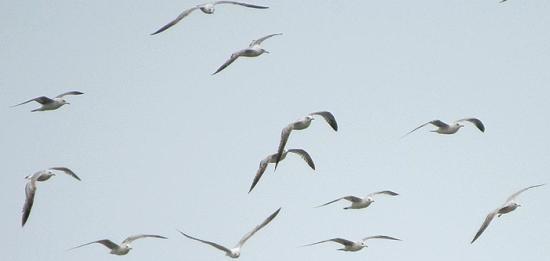Bird Backpacks And Attack-proof Sensors For Some Scorries
23rd December 2017

Miniature bird backpacks containing solar-powered GPS systems or tracking tags on tail-feathers could transform our understanding of how wild birds move around offshore wind farms.
The technologies are among the suggestions put forward by four pioneering companies responding to an innovation challenge from the Offshore Renewable Energy (ORE) Catapult, working on behalf of Moray Offshore Windfarm (East) Ltd (Moray East), with the project supported by Beatrice Offshore Wind Ltd, Marine Science Scotland and Highlands and Islands Enterprise.
The aim of the project is to find a more reliable and robust tag for seabirds that can deliver truly accurate data on bird behaviour over the course of 12 months and improve on existing, accepted methods.
Having talked to Moray East and other partners, the companies are now working to specific performance targets to find the best technology to help monitor bird behaviours and test fully prior to deployment. The successful company or companies will see their devices first used on greater black-backed gulls - although the technology will require to be adapted for other species.
Vicky Coy, ORE Catapult project manager, said: "Developing a tag that withstands a bird's natural behaviour is key to developing a greater understanding of their movements. It's more difficult than it sounds.
"But the solutions suggested are ingenious. One, for example, is a small backpack which contains a solar charger to keep the battery going, and another attaches discreetly to the tail feathers.
"With battery life a concern, one suggestion was to use ‘geo-fencing' to ensure full details of the bird’s movements are only transmitted when it’s in the proximity of a predetermined area, giving us more detail than ever."
In setting criteria for the tags, the project team worked with a number of environmental and regulatory partners, such as RSPB’s technical department, to set strict criteria for successful tags to ensure they don’t interfere with birds’ lifestyle or safety.
As such, the tags must:
Weigh no more than 3% of the bird’s overall body weight
Should have a battery capable of lasting for 12 months
Should be strong enough to withstand attacks
Offer quick release mechanisms to prevent snagging
The four successful companies, Pathtrack, Movetech Telemetry, Ornitela and Debug Innovations are now in discussions with Moray Offshore (East) Ltd and Beatrice Offshore Wind Ltd with a view to deploying the tags for use monitoring birds around the forthcoming wind farm developments in the Moray Firth.
Catarina Rei, Technical Lead on the project for EDP Renewables, who are developing Moray East, said: “Environmental monitoring is already a big part of any wind farm planning and post-construction monitoring, onshore and offshore and so we are always looking for new ways to improve monitoring, and take advantage of new innovations in, for example, batteries and solar power.
“Developing new techniques and methods is an essential step in improving what we do. We’ll be able to gain a greater insight into bird and coastal species behaviour, which will better inform the planning, consenting and operational stage of an offshore wind farm development."
“This work is part of our ongoing engagement with communities, organisations and agencies as part of the development process, and we are delighted that this work with stakeholders will result in the advance of practical knowledge for deploying low-carbon generation to reduce the impact of greenhouse gas production associated with producing energy."
Nigel Butcher, Senior Technical Officer at the RSPB said: “This is a really exciting project which will hopefully pave the way for further technological advances in tracking seabirds. RSPB has previously worked with several of the shortlisted companies and given our experience with them are confident that the criteria for the new tags will be met to an incredibly high standard.
“As well as providing vital information about seabirds at this one offshore wind farm site the project will provide a wider contribution to our understanding in other areas. The tracking devices created through this project could be used to monitor bird populations elsewhere, which is crucial to not only learning more about their behaviour but also how they respond and adapt to changes in their environment, guiding future planning and management decisions.”
